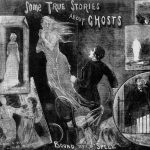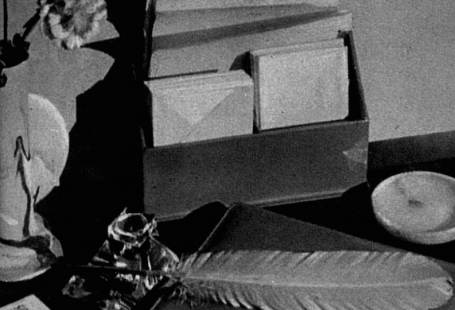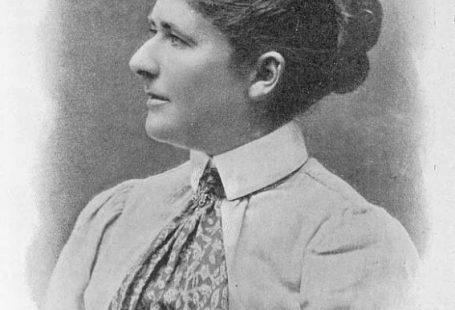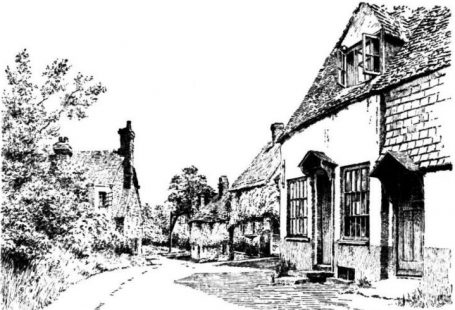This week at The Archive we have been busy adding 178,016 brand new pages for you to explore, with the addition of eight brand new titles this week, which cover a range of specialities, from sport to religion, from illustrated news to military information, whilst also covering the counties of Kent, Surrey and Middlesex.
We’ve also updated a wide range of our existing titles, with eighteen titles on The Archive gaining new pages this week. So read on to discover more about all our new and updated titles, as well as to find out about how the Football Association (FA) was formed back in October 1863.
Register now and explore the Archive
So without any further ado, let’s ring up our first new title of the week, which is religious newspaper the Dial. All of our new newspapers this week have been digitised as part of the British Library’s Heritage Made Digital project, which you can read about here.
With its motto of ‘Whatsoever ye would that men should do to you do ye even so to them,’ Dial was first published on 7 January 1860 at the cost of three pence. It hoped to be a ‘first-class London Daily Journal,’ which would base itself on ‘the principle that ‘Righteousness exalteth a Nation.”

Moreover, Dial was the creation of the National Newspaper League Company. Its first edition gave an overview of the aims of the Company:
Stated in the most comprehensive terms, the aim of the company is to apply the Newspaper Press, on a method not hitherto attempted, to the exercise of a just and vigilant censorship in the interest of the country; and to the supply of accurate information on political, social and religious subjects, to the formation and diffusion of sound opinion on public questions; and to the moral and intellectual instruction of the great body of the people.
Dial, therefore, would be didactic and exercise the utmost care in relaying news to its readers. Indeed, the newspaper contained its own ‘Ethical Column,’ which sat alongside articles addressing parliamentary reform, ‘military and nautical news,’ and literature. Dial also had a focus on religious news, featuring a section entitled ‘The Religious World,’ with news from across Britain’s Christian denominations, from the Church of England to the Primitive Methodists, as well as religious news from further afield, for example from China and Japan.
Our next new title of the week is the Finsbury Free Press. On 30 May 1868 the London City Press wrote how ‘Finsbury is again represented by a newspaper,’ as the Finsbury Free Press had arrived onto the publishing scene a week before, on 23 May 1868.
Costing just one halfpenny, and consisting of four pages, the Finsbury Free Press appeared every Saturday. In its first edition, its publishers described the new publication’s aim:
The object of this paper is to provide the Borough of Finsbury with a representative organ of public opinion similar to that possessed by other Metropolitan Boroughs, and by every other Parliamentary Borough in the United Kingdom.

Meanwhile, the Finsbury Free Press promised to:
…honestly reflect the views both of the electors, and of the thinking portion of the non-electoral body, on all the great and pressing questions of the day, Parliamentary and Financial Reform, Religious Equality, the mutual obligations of Labour and Capital, and the Educational wants of the age. Questions of Economic and Sanitary Reform, in connection with the supply of Gas and Water, and of Parochial Expenditure, will also be treated with like earnestness, independence, and impartiality…
The Finsbury Free Press, moreover, would ‘reflect the inner life of the Borough,’ with its ‘outer life faithfully photographed from week to week.’ To this end, the newspaper featured a range of ‘Local Intelligence,’ from the areas of Finsbury Park, Islington, Clerkenwell, St. Pancras and Holborn, reporting on the Metropolitan Board of Works and vestry elections.
Our next new title is a particularly exciting one, as it is illustrated, and aptly named the Illustrated Times 1853. First published on 17 December 1853, the Illustrated Times 1853 cost three pence and promised to be ‘A Family Newspaper for Town and Country,’ with a focus on news, literature and art. Printed in Walworth, South London, this newspaper would feature ‘all the news of the week,’ whilst being ‘enriched with numerous beautiful engravings.’

Its first edition featured a front page which depicted an illustrated montage entitled ‘Christmas in Perspective,’ looking at how the festive period for some represented a feast, whilst for others, it represented famine. The first edition of the Illustrated Times also featured a drawing of the Crystal Palace, which was completed several years before, as well as a depiction of Christmas preparations at Covent Garden market.
Alongside such drawings, the Illustrated News featured the latest from across the world, from countries like Russia, Turkey, Germany, America, Australia, India, China and beyond. It also focussed on ‘Law and Police News,’ containing updates from the likes of the Middlesex Sessions, the Winter Assizes in Liverpool and the Central Criminal Court. Within its pages you can also find ‘Green-Room Gossip’ from the theatres, serialized fiction, poetry, articles on chess, reviews of ‘new music,’ and ‘City Pictures,’ which included caricatures of various city types, such as the ‘Mincing-Lane Men.’

It’s to Kent now for our next new title, Orr’s Kentish Journal, which was first published on 7 January 1860 in Woolwich by Walter Orr. A week before the newspaper’s debut, the South London Times and Lambeth Observer noted how:
The people of Kent have determined on a penny weekly paper – eight pages for one penny – entitled Orr’s Kentish Journal. It will be a thorough County paper; circulated in every town and village in Kent. Upwards of 50,000 weekly will be disposed of.
This penny Saturday paper, therefore, was intended to be circulated in ‘Woolwich, Greenwich, Deptford, Lewisham, Bromley, Blackheath, Charlton, Eltham, Dartford, Gravesend, Strood, Chatham, Maidstone, Deal, Dover, Canterbury, Ramsgate, Margate, and throughout the whole of KENT.’ Indeed, the newspaper claimed in its first edition how:
…Woolwich, Greenwich, and Deptford, possessing a population of upwards of 100,000 souls, are still without a newspaper of such a price as to be within the reach of all…

And so Orr’s Kentish Journal stepped in to remedy this lack, noting how ‘The great object of the day is the diffusion of knowledge,’ and how it would ‘endeavour…to supply that greed for information, which is the great feature of the day.’ Within the pages of this newspaper you can find a whole range of local news, from happenings at Woolwich theatre and a Plumstead churchyard, as well as reports of ‘Alleged Misdoings at Deptford Dockyard.’
Sport is the name of the game for our next new title, and also the name of the publication – Sport (London). First published on 16 March 1880, Sport appeared every Tuesday and cost one penny. It had a particular focus on racing news, and featured the latest on upcoming meetings, as well as betting news. Aside from racing, Sport also provided commentary on the Oxford and Cambridge boat race, athletics and swimming, describing the latest exploits of intrepid cross-channel swimmer Captain Webb.

Sport featured a range of illustrations too, its front page depicting personalities from the racing world, with sketches of other famous people of the day also featured in the pages of the publication. Alongside sporting news, Sport contained serialized fiction, such as a tale entitled ‘A Sudden Chance,’ which was described as being a ‘New and Decidedly Original Farce…by An Undistinguished Author.’
From sport now to Surrey, and the Surrey Mercury. The Surrey Mercury was first published on 30 October 1845 at the cost of five pence, appearing every Thursday, and its full name was the Surrey Mercury, Guildford, Croydon, Kingston, Epsom, Dorking, Reigate, Farnham, & Chertsey Agricultural Journal. Remarkably, the county of Surrey was without its own newspaper, an issue which the first edition of the Mercury addressed in detail:
The County of Surrey, with the single exception of the miniature County of Rutland, is the only one in England in which no Newspaper is printed and published. The adjoining County of Kent, with a population of 548,337 according the last census, supports twelve Journals – four at Canterbury, two at Maidstone, one at Rochester, one at Gravesend, two at Dover, and two at Greenwich. Sussex, with a population under 300,000, possesses a corresponding number – whilst Surrey, with a population greater than either, being, at this time, upwards of 600,000, is without one local publication to record its occurrences, and advocate its interests.

The Surrey Mercury, therefore, was stepping in to fill this publication void, hoping also to be something of an agricultural newspaper, as its first edition states:
The Farmers, Hop-growers, and Graziers of these important agricultural districts, may with confidence refer to its columns for full and carefully compiled information of the state of the London Markets.
A robust local newspaper, the Surrey Mercury contained ‘County Intelligence’ from the likes of Clapham, Cranley, Croydon, Kingston, Lambeth, Reigate, Richmond and Streatham, with news from the Surrey Sessions. It also contained reports regarding the Surrey Railway Bills and the Grand Surrey Canal Company, whilst featuring a column dedicated to ‘Miscellaneous Intelligence.’ Politically independent, the Surrey Mercury stated how it was ‘not a journal started for party purposes.’
Our penultimate new title of the week is the first of our two military titles that we have added to our collection, and it is the Wellington Gazette and Military Chronicle. Appearing on the 15th of every month, costing six pence and consisting of 24 pages, the Wellington Gazette was edited by Irish barrister Robert O’Byrne, who was also known as being the editor of the ‘most valuable and able work The Naval Biography.’

Representing a ‘military history of our own times,’ the Wellington Gazette contained an ‘Army Circular’ which covered the movements of, for example, the Royal Artillery, the cavalry and the infantry, as well as news from the various military departments, from medical to manufacturing, from clothing to chaplain’s. It also featured a section devoted to the ‘Distribution of the Regiments of the British Army,’ giving an overview of where the various sections of the British Army were stationed, whilst also featuring a ‘Military Trades Directory.’
Meanwhile, the Wellington Gazette also contained notices of deaths and promotions, as well as being filled with six pages of advertisements, which were often illustrated.
Our final new title of the week is another military one, and is called the York House Papers. First published on 5 November 1879 with a wonderful coloured front page, the York House Papers described itself as a ‘Weekly Journal for the Families of the Army, Navy, and Auxiliary Forces,’ costing just one penny. It ran with the famous Richard III quote: ‘Now is the Winter of our discontent, Made Glorious Summer by this HOUSE of YORK’
In its first edition, York House Papers laid out its aims, whilst addressing ‘Our Readers:’
We hope to present a large and special class of readers with a social paper, devoid of impertinent personality or prurient gossip; a family paper, which shall be thoroughly pure, without being dull; a military and naval paper, which shall contain abundance of information interesting to the Services, without being over-laden with tedious, quasi-scientific articles. In short, what we aim at is to produce a journal which shall combine the attractions of the social, the Service, and the general paper, without their defects or blemishes.

Meanwhile, its publishers ventured to ‘hope that our offspring will be appreciated by both sexes, of all ages and professions,’ as it would rely on ‘the support of the families of officers of the Army and Navy.’ And the York House Papers had a further distinguishing feature; it was to be a ‘Register for Exchange and Barter.’ For a ‘small cost,’ the newspaper would provide ‘facilities…for bringing into communication those who have articles they may wish to part with,’ an early Facebook marketplace, if you will.
Alongside the register, the York House Papers also contained articles devoted to military and naval matters, such as the Junior Army and Navy Stores, military transport, army and navy appointments, and the latest from the militia and auxiliary forces. Beyond the military, the newspaper featured sections devoted to ‘Social Gossip,’ ‘Music and the Drama,’ ‘Dress,’ and sport, as well as notices of births, marriages and deaths.
As well as these exciting eight new titles we have added to The Archive this week, we have also updated a range of our existing titles. Highlights include the over 14,000 pages we have added to one of our Welsh titles, the Flintshire Observer, whilst we have added over 9,000 pages to Lancashire’s Fleetwood Chronicle and the Glossop-dale Chronicle and North Derbyshire Reporter. Meanwhile, we have added over 8,000 pages to the Fenland Citizen and the Newmarket Journal.
The Formation of the Football Association – October 1863
On 31 October 1863, Orr’s Kentish Journal reported how:
A meeting of the representatives of the football clubs of the metropolis and the suburbs, was held recently at the Freemasons’ Tavern, for the purpose of promoting the adoption of a code of rules, and generally to bring the game of football into a more definite position.
This ground breaking meeting marked the formation of the Football Association (or FA), which codified the game of football and became the governing body of association football. It is oldest football association in the world.

One of our other new newspapers, Dial, reports in further detail on the meeting:
On Monday a meeting of the captains or other representatives of the football clubs of the metropolis was held at the Freemasons’ Tavern, Great Queen-street, Lincoln’s Inn-Fields. Mr. Pember, N.N. Kilburn Club, having been voted to the chair, observed that the adoption of a certain set of rules by all football players was greatly to be desired, and said that the meeting had been called to carry that object into effect as far as practicable.
Consequently, Ebenezer Cobb Morley (from Barnes football club), moved the following resolution, being seconded by Mr. Mackenzie of Forest Club, Leytonstone:
That it is advisable a football association should be formed for the purpose of setting a code of rules for the regulation of the game of football.

There was some slight push back from a Mr. B.F. Hartshorne of the Chaterhouse School, who:
…felt it was most desirable that a definite set of rules be generally adopted, yet, as the representative of the Charterhouse School, he could not pledge himself to any course of action without seeing more clearly what other schools would do in the matter. On the part of the Charterhouse he would willingly coalesce if other public schools would do the same. Probably, at a more advanced stage of the association, the opinion of the great schools would be obtained.
The chairman, Arthur Pember, then remarked that ‘every association must have a beginning,’ and the resolution was put forward, and ‘carried.’ Arthur Pember was then elected president, with Ebenezer Cobb Morley as the honourable secretary. Annual membership, it was decided, would cost one guinea, ‘all clubs being eligible if of one year’s standing.’ And the rules of the association would be revisited every year, in the last week of September.

Some three years later, in April 1866, Orr’s Kentish Journal describes a ‘A great match of football’ which was played according to association rules, between ‘eleven picked men of the Sheffield Club and eleven Londoners.’ Orr’s Kentish Journal remarks how the ‘laws of the association…were in force, and worked very well indeed.’
The Sheffield players had challenged the London players, and amongst the London side were protagonists from the October meeting in 1863, including Pember and Morley. Orr’s Kentish Journal describes the match as follows:
Pember kicked off for London, and after a quarter of an hour’s very brisk play a goal was kicked for London by E.C. Morley. Sides were then changed, and after a few minutes’ play Barnes made a touch down for London, and then the ball was cleverly run down by Martin and a goal kicked by Alcock for London; it was, however, disallowed, as he was stated to be offside, and in consequence of this check, play was resumed with greater vigour than ever, but Barnes soon after obtained another touch down for London.

Play continued through ‘a tremendous shower of rain,’ and the Sheffield team, despite playing ‘pluckily to the end,’ lost the match to the southern side. But there were no hard feelings; indeed, the two sides ‘met at dinner at the Albion, Covent-garden,’ with Arthur Pember proposing ‘the health of the Sheffield Club,’ with the captain of the Sheffield side, W. Chesterman, replying in kind.
You can find a whole range of sporting results and match accounts in the pages of The Archive, begin your search here today.
New Titles
Title | Years Added |
| Dial | 1860-1864 |
| Finsbury Free Press | 1868-1869 |
| Illustrated Times 1853 | 1853-1854 |
| Orr’s Kentish Journal | 1860-1866 |
| Sport (London) | 1880 |
| Surrey Mercury | 1845-1847 |
| Wellington Gazette and Military Chronicle | 1869-1878, 1880 |
| York House Papers | 1879-1881 |
Updated Titles
This week we have updated eighteen of our existing titles.
You can learn more about each of the titles we add to every week by clicking on their names. On each paper’s title page, you can read a FREE sample issue, learn more about our current holdings, and our plans for digitisation.
Title | Years Covered |
| Bolton Free Press | 1836-1841, 1847 |
| Bury Free Press | 1995-1996 |
| Diss Express | 1991 |
| Fenland Citizen | 1990-1992 |
| Fleetwood Chronicle | 1846-1849, 1851-1873, 1875-1876, 1889-1894, 1925, 1948 |
| Flintshire Observer | 1857-1895, 1897, 1904-1911, 1913-1914 |
| Glossop-dale Chronicle and North Derbyshire Reporter | 1872-1894, 1911 |
| Grantham Journal | 1994 |
| Kent Messenger | 1912 |
| Lynn Advertiser | 1989, 1991-1992 |
| New Milton Advertiser | 1991 |
| Newark Advertiser | 1991 |
| Newmarket Journal | 1976-1977, 1994-1996 |
| Oxford Chronicle and Reading Gazette | 1873, 1896, 1899, 1903, 1907, 1913, 1915 |
| Saffron Walden Weekly News | 1996 |
| Shetland News | 1888-1892 |
| Spalding Guardian | 1881-1884, 1887, 1890, 1892 |
| Suffolk and Essex Free Press | 1995-1996 |
You can keep up to date with all the latest additions by visiting the recently added page. You can even look ahead to see what we’re going to add tomorrow.






